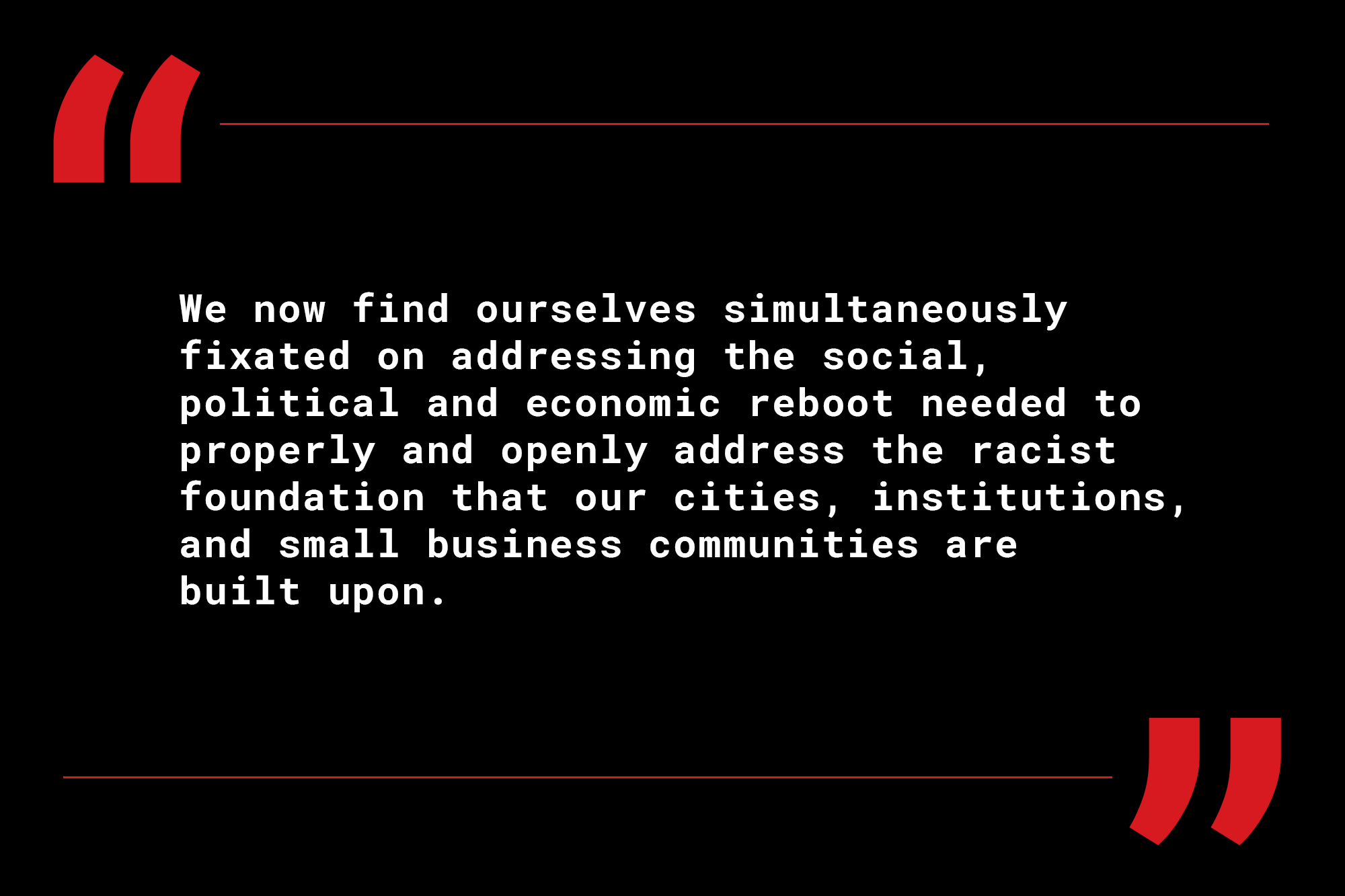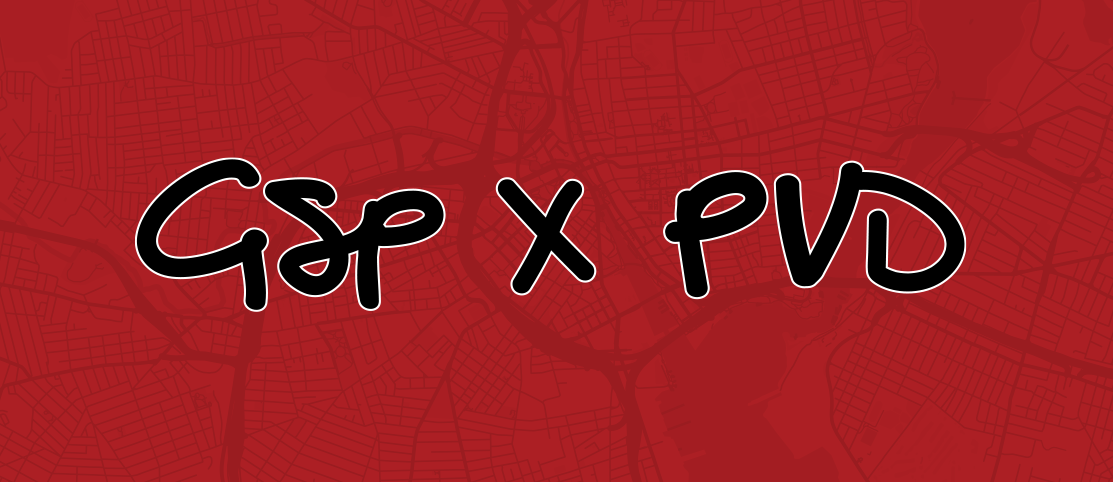Update #13: So, Now What?
Dear Clients and Colleagues,
As recently as late May, I believed our singular call to action as a firm for 2020 was to better understand and adapt our work in response to the COVID-19 induced upheaval in retail, entertainment, placemaking and real estate. This work will continue, but we now find ourselves simultaneously fixated on addressing the social, political and economic reboot needed to properly and openly address the racist foundation that our cities, institutions, and small business communities are built upon. Doing our part to aggressively confront this other pandemic doesn’t include talk of things entirely beyond our control (like a vaccine), and thus oddly feels more actionable than working to mitigate the impacts of coronavirus. There is an abundance of research and evidence detailing the impacts of racism, root causes of it, enabling factors, way it spreads, and strategies for effectively fighting it. We cannot yet say the same for coronavirus.
Like racism though, coronavirus’ reverberations are ever present in the spaces, places and industries Graffito touches. COVID-19 is a new threat that we are going to keep writing and talking about as related to retail, city building, the public realm, restaurant operations, e-commerce and consumer behavior. But, in truth, it is getting harder for me (and others on the Graffito team) to write about COVID-19 impacts, largely because it has become less central of late in comparison to the Black Lives Matter movement, but also because many of us are experiencing information overload right now on all things coronavirus.
As hard as this overload of information has been on Graffito, it has been far more burdensome for retailers and restaurateurs, who must balance diverse perspectives and pressures from landlords, investors, municipalities, customers and employees. All while keeping customers safe, staff cared for, and the lights of their business on. What we are hearing right now from the vast majority of them is that this is exhausting, incredibly challenging, and nearly impossible work.
For the rest of us — those working in real estate development and ownership — the economic data and related metrics, surveys and interpretations that are meant to provide a path forward are all over the place. Divergent narratives exist about the future of the office, the success (or lack thereof) of retail re-openings, and consumer demand, just to name a few. Furthermore, most pundits look at the country as one big real estate market, which is wildly flawed thinking. There is extreme variation in the facts and circumstances from state to state, city to city, neighborhood to neighborhood. And this makes getting reliable information right now really hard. What we are experiencing right now in Boston is extraordinarily different than what folks in Miami, Houston and Tulsa are going through.
The intense ambiguity and uncertainty in retail real estate (and retail and real estate generally) that I wrote about in prior updates remains. Part of me feels that the situation it is even more fluid today than at points prior. Massachusetts has OK’d restaurants for indoor dining as of today while many operators in the Southeast US and Sun Belt are just starting to close again due to major upticks in infection rates. Apple stores never reopened in MA, and as of Friday Apple announced closings (for the second time) in FL, TX and the Carolinas. The fear that many of us had about retail re-openings followed by secondary shutdowns is already coming to fruition in some places, which is really bad news. To be expected, sure, but not good; and for sure a wake up call for many.
So, now what?
One of the things I am most proud of in Graffito’s work since March is that we took action early, quickly and weren’t afraid to put ideas, perspectives and learnings into the public domain via our blog and these updates. Things are more complex now though, there is more information to process, and we are in increasingly volatile political, social and economic times. The aggregate force of all of this fell in on us these past few weeks and we took a break from writing new scopes, posting to the blog, and engaging daily on social media. We needed this break to plot our next steps and focus on internal change. But now it’s time to reengage.
Reengagement for us means we are going to take more creative and intellectual risk in our work and new businesses, while still leaning on our past successes and identity. We will continue to track both national and hyper-local trends and news stories that touch retail real estate, urban design, and community economic development. We are particularly interested in the way restaurants, landowners, and cities are adapting and pivoting as conditions change. And we are acutely aware that institutional racism will make the recovery from coronavirus far harder for our most vulnerable and underserved urban neighborhoods.
Reengagement for us also means reinventing Graffito as a more actively anti-racist organization, which I elaborated on in Update #12. Since early June here is what we have done / are doing to advance this pursuit:
- We are talking regularly about race and anti-racism in our work. Talking isn’t enough, but it’s a start for us and has already led to some really powerful decisions about subsequent action. And it’s not just internal talk; we’ve also had some very encouraging conversations with our clients about diversity, equity, and inclusion (“DEI”) initiatives in our projects.
- The entire Graffito team is part of our efforts to align the firm’s values towards anti-racist ends, but to promote swift action we have created an internal team to specifically research and effectuate Graffito training and diversity education programs.
- Graffito is allocating $500 per employee this month for donations to an org of each employees choice in the anti-racist, social justice and/or Black Lives Matter space.
- I am working on rewriting our standard form Scope of Work and certain contractual provisions to specifically reference DEI and the centrality of it to our work.
- We have a reading list going on our Slack channel for employees to share articles and facilitate learning about anti-racism, white privilege, police brutality, and other pressing matters related to our DEI efforts.
- We are shifting our pro-bono work to be more focused on assisting Black, Indigenous, People of Color (“BIPOC”) owned businesses.
- We are continuing to advocate for policy initiatives that create more opportunity for female and minority owned businesses, such as liquor license reform in the City of Boston.
- We are continuing to prioritize work with anti-racist organizations in our space and accelerate the roll-out of restaurant and retail lease with businesses owned by BIPOC teams.
- Each one of us at Graffito has taken this implicit association test.
- We will be scrutinizing panels we are invited to attend and/or speak on to ensure there is representation from those other than white males. Representation from females and BIPOC will be a prerequisite for Graffito’s participation moving forward.
Reading through this list feels good, but it also mostly feels like a drop in the bucket. But it is more than we were doing at any other point in Graffito’s history. In sharing the above, I invite you to provide feedback to us on what more we can do, where we are missing the mark, if you want to join us in any of this, how we can share best practices, and how we can hold each other accountable in our respective pursuits to make better, more inclusive, more diverse, more equitable, and more valuable urban places.
Thanks for reading and please be in touch,
/Jesse




